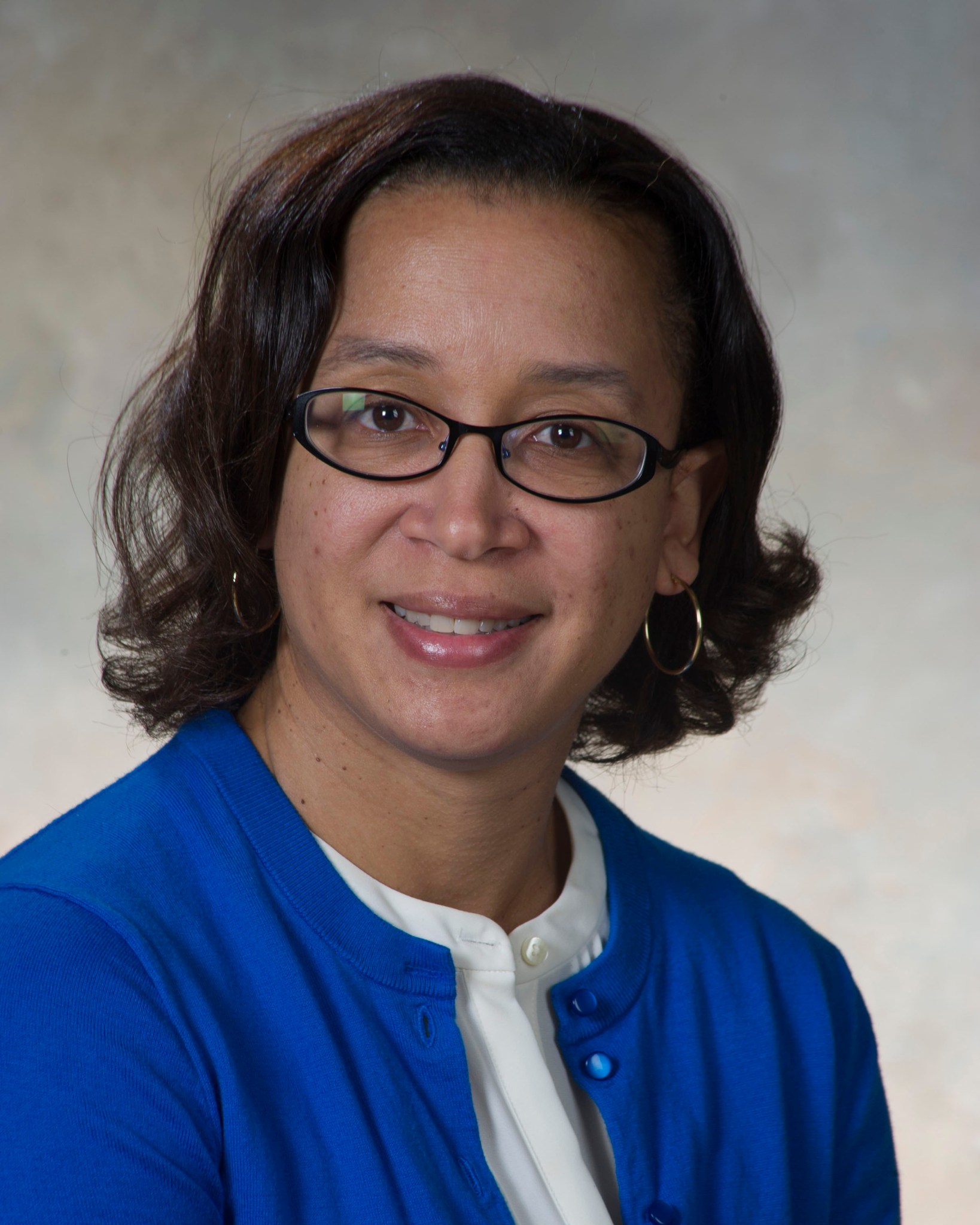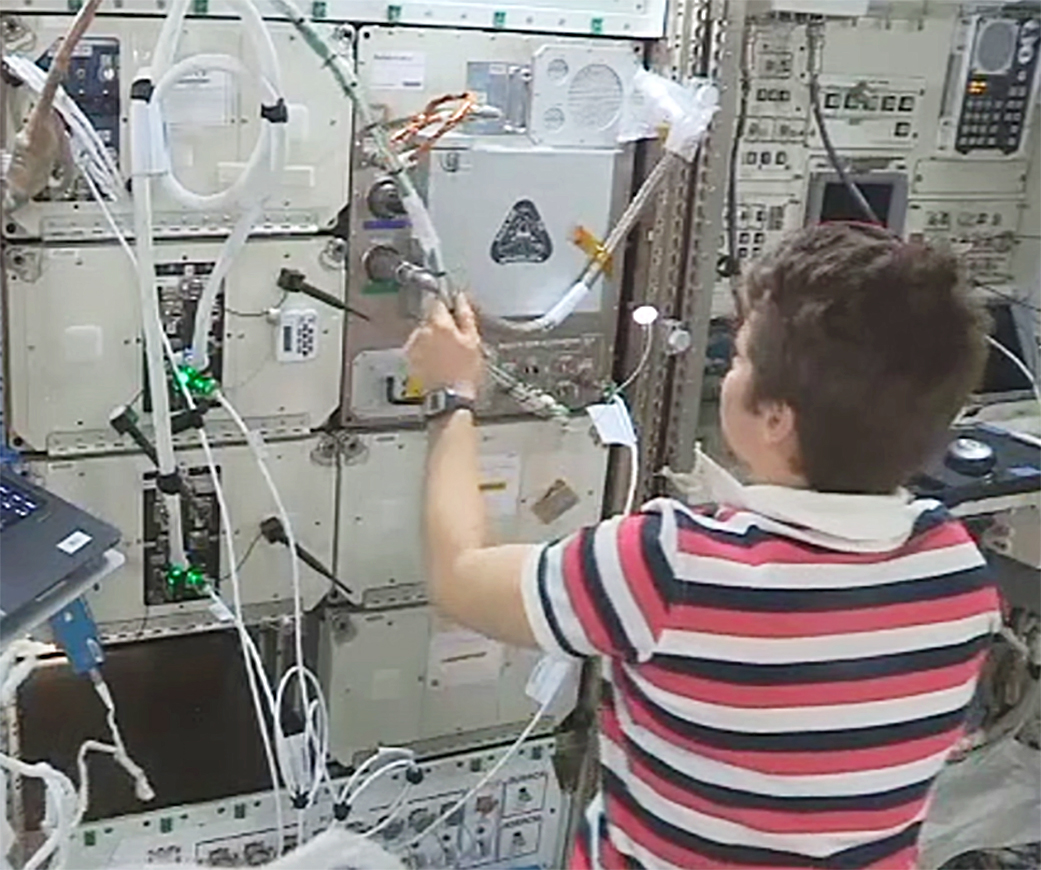In This Week’s Star
- NASA Joins Structures to Form Top of Space Launch System Core Stage
- Rhega Gordon Named Center Chief Financial Officer for NASA’s Marshall Space Flight Center
- Resource Website Available for Potential Government Shutdown
- Marshall Team Members View Liquid Hydrogen Tank for SLS
- Refabricator to Recycle, Reuse Plastic Installed on Space Station
- Marshall Remembers Those Who Sacrificed All for Space Exploration
- Feb. 14 Marshall Tech Talk to Feature Solar Array Technology
- Margrit von Braun, Daughter of Rocket Pioneer Wernher von Braun, to Speak at UAH
- This Week in NASA History: Full-Duration Captive Rocket Firing at Mississippi Test Facility – Feb. 10, 1968
- Obituaries
NASA Joins Structures to Form Top of Space Launch System Core Stage
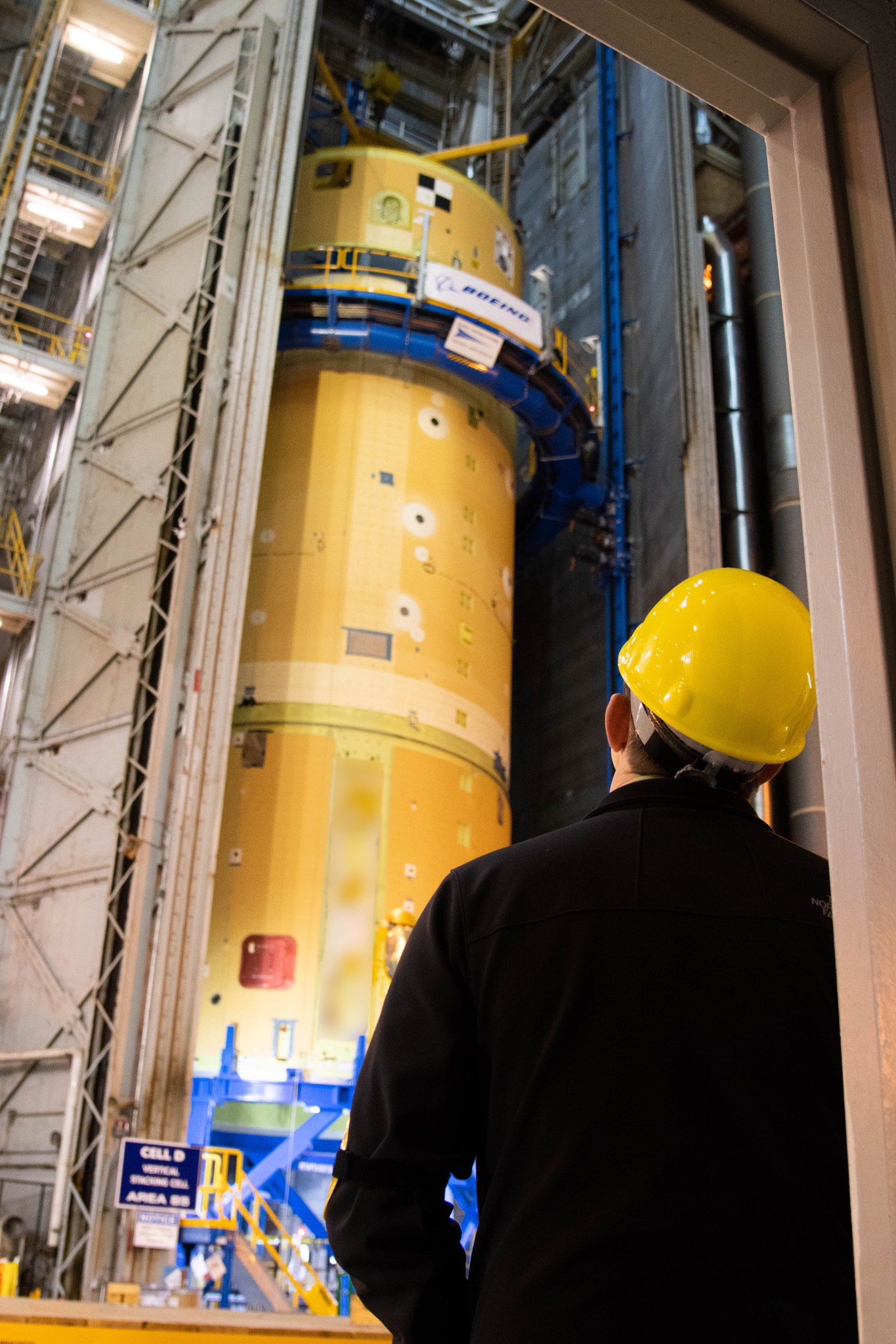
Engineers at NASA’s Michoud Assembly Facility have completed the “forward join,” connecting structures to form the top part of NASA’s Space Launch System (SLS) rocket’s core stage. This first core stage will send Exploration Mission-1, the first integrated flight of SLS and the Orion spacecraft, out beyond the Moon. Here, the forward join mated three structures: the forward skirt, liquid oxygen tank and intertank. This milestone marks the beginning of integration and assembly of the massive, 212-foot-tall SLS core stage, which will include the rocket’s four RS-25 rocket engines, propellant tanks and flight computers. Now, NASA and Boeing, the SLS prime contractor, will continue to integrate various systems inside the forward part of the core stage and prepare for structural joining of the liquid hydrogen tank and engine section to form the bottom of the stage. These two parts of the core stage will then be assembled to form the largest stage NASA has ever built. Watch a video showing how the structures were connected: https://youtu.be/hdxK8_5Yy-s (NASA/Jude Guidry)
Rhega Gordon Named Center Chief Financial Officer for NASA’s Marshall Space Flight Center
NASA has announced the appointment of Rhega Gordon to the Senior Executive Service position of center chief financial officer for NASA’s Marshall Space Flight Center.
The Senior Executive Service is the personnel system covering top managerial positions in federal agencies.
Gordon will oversee implementation and administration of all integrated Marshall and NASA financial management, including all aspects of planning, programming, budget and execution processes and guidelines for distribution of financial resources.
Prior to her appointment, Gordon served as deputy center CFO since July 2013 and as acting center CFO since the retirement of Marshall CFO Bill Hicks in January.
Previously, Gordon was manager of the Planning and Control Office in Marshall’s Flight Programs and Partnerships Office and manager of the Science and Mission Systems Program Planning and Control Office. She managed the Instrument & Payload Systems Department Resources Group, part of Marshall’s Engineering Directorate; and she was also manager of the Engineering Directorate’s Payload and Technology Business Office and Space Systems Payloads and Project Offices.
Gordon was appointed team lead in Marshall’s Flight Projects Directorate after beginning her NASA career in 1991 as an engineer in Marshall’s Ground Systems Department of the Mission Operations Laboratory.
A native of Athens, Alabama, Gordon earned her bachelor’s degree in electrical engineering from the University of Alabama in Huntsville in 1991. During her NASA career, she has received numerous awards and honors, including a NASA Exceptional Service Medal for outstanding leadership as manager of the Planning and Control Office in the Flight Programs and Partnerships Office; NASA Distinguished Performance Awards for successful execution of science and mission resources and for successful collaboration and integration of engineering organizations and facility resources, respectively; 12 special service awards; and 10 group achievement awards. She was named a Space Flight Awareness Launch Honoree in 2002.
Gordon and her husband, Orlando “Fritz” Gordon, live in Madison with their two children.
Resource Website Available for Potential Government Shutdown
NASA Marshall Space Flight Center team members are encouraged to monitor and bookmark the Marshall NASA People furlough website at https://nasapeople.nasa.gov/shutdown/msfc.html. This is a public-facing website that will be available when the center is closed because of a government shutdown.
On this website, center leadership will share status updates, furlough resources and any other center-specific, relevant information with team members before, during and after a government shutdown.
During a shutdown, employees should expect to find helpful information here, the 4-HELP (256-544-4357) line and the Emergency Notification System calls or text messages as new information becomes available.
Marshall Team Members View Liquid Hydrogen Tank for SLS
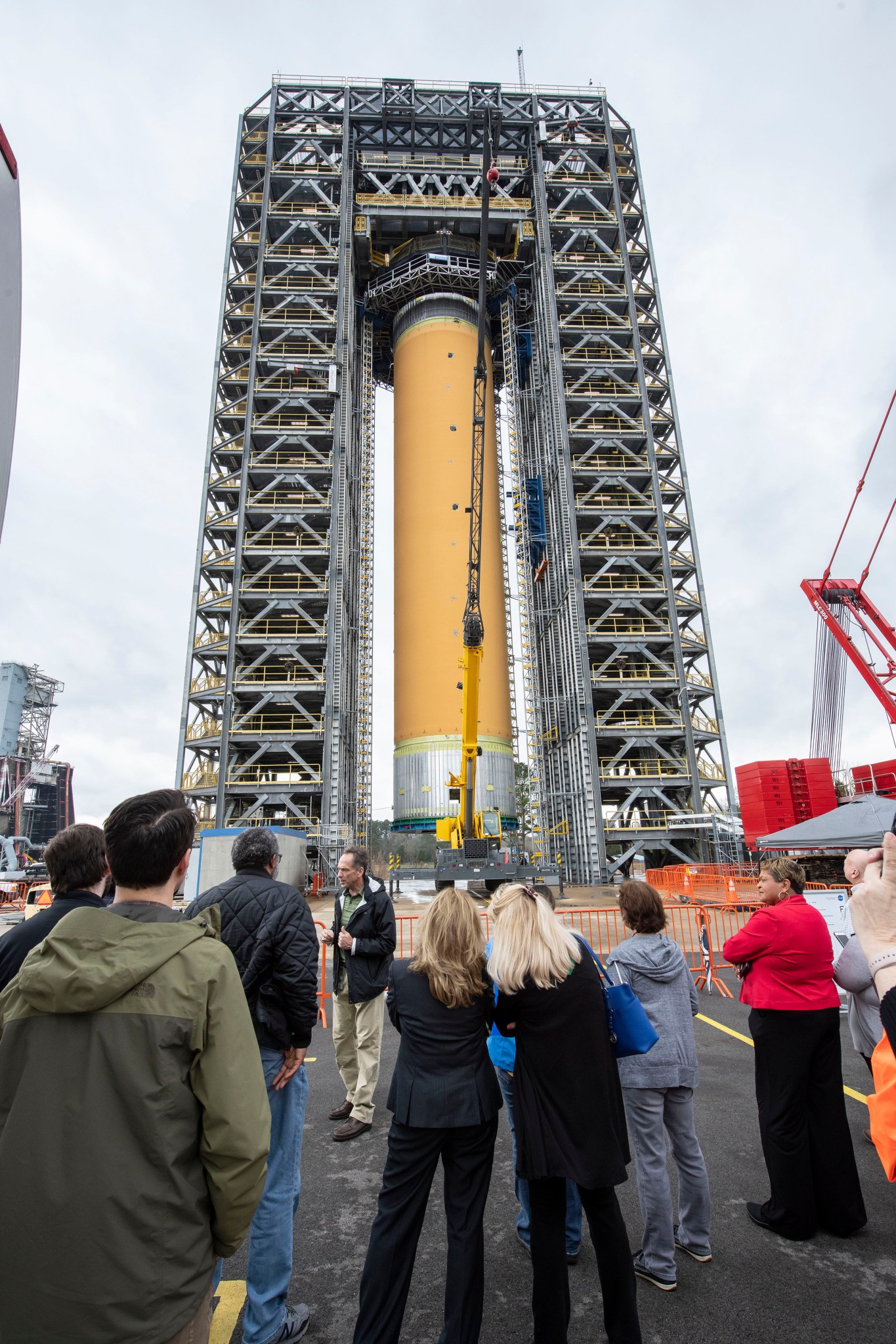
More than 700 NASA Marshall Space Flight Center team members, Boeing employees, Team Redstone participants and local officials filled 17 buses Feb. 6 to view the liquid hydrogen tank structural test article installed in Test Stand 4693 at Marshall. The 149-foot liquid hydrogen tank structural test article is the largest piece of structural test hardware for the core stage of NASA’s Space Launch System (SLS). At 221 feet tall, Test Stand 4693 is the largest test stand at Marshall — as well as one of the newest. During testing, dozens of hydraulic cylinders in the test stand will push and pull on the tank to simulate the stresses and loads it will endure during liftoff and flight for lunar missions. (NASA/Fred Deaton)
Refabricator to Recycle, Reuse Plastic Installed on Space Station
The first integrated recycler and 3D printer recently was successfully installed onboard the International Space Station into the station’s experiment racks. This technology demonstration, called a Refabricator, will turn plastic materials of various sizes and shapes into feedstock used to 3D print items. The entire process happens in a single automated machine about the size of a mini refrigerator.
“The Refabricator is key in demonstrating a sustainable model to fabricate, recycle and reuse parts and waste materials on extended space exploration missions,” said Niki Werkheiser, manager of in-space manufacturing at NASA’s Marshall Space Flight Center.
The Refabricator was developed and built by Tethers Unlimited, Inc. for NASA’s in-space manufacturing project at Marshall with funding from NASA’s Small Business Innovation Research program.
Experiment operations on the space station will begin soon.
Marshall Remembers Those Who Sacrificed All for Space Exploration
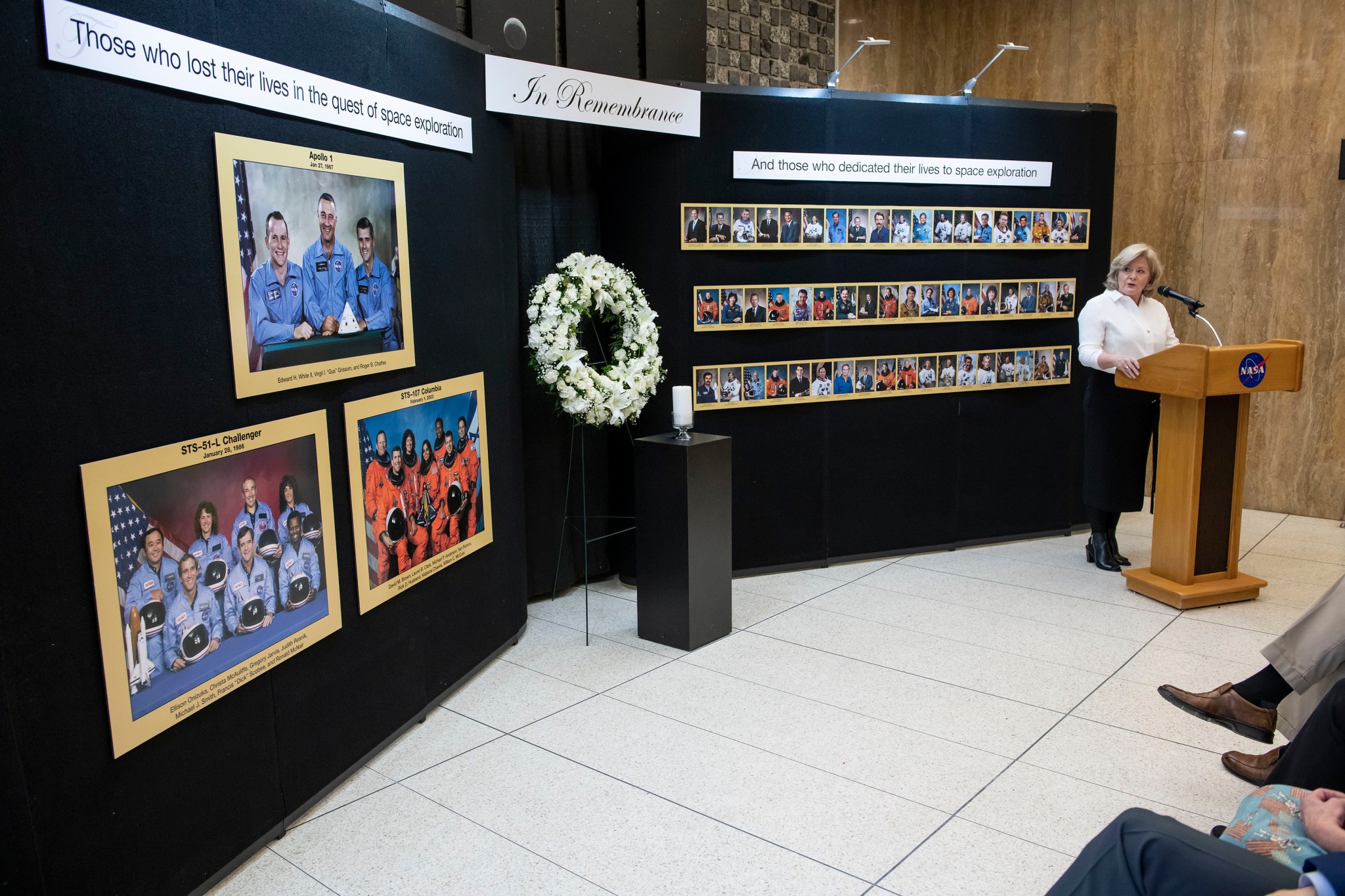
NASA Marshall Space Flight Center Director Jody Singer looks solemnly toward a display honoring the crews of space shuttle Columbia STS-107, space shuttle Challenger STS-51L and Apollo 1 during the center’s Day of Remembrance ceremony Feb. 7. Singer, former astronaut Jan Davis, and Marshall Safety and Mission Assurance Directorate Director Rick Burt, spoke at the annual ceremony, which honors those who lost their lives in the quest of space exploration and those who dedicated their lives to space exploration. The ceremony concluded with Singer lighting a candle in memory of the honorees and a moment of silence led by Johnny Stephenson, director of the Office of Strategic Analysis & Communications. (NASA/Fred Deaton)
Feb. 14 Marshall Tech Talk to Feature Solar Array Technology
Get an inside look at NASA Marshall Space Flight Center’s innovative thin-film solar array at the upcoming session of Marshall’s Tech Talk series on Feb. 14 at 1 p.m. in Building 4220, Room 1103.
John Carr, an electrical power subsystem engineer for the Space Systems Department of Marshall’s Engineering Directorate, will provide an overview of the thin-film solar array for CubeSats, or small satellites, and how Marshall is using this technology to develop very large thin-film solar arrays designed to replace nuclear power propulsion for certain deep space exploration missions.
Marshall Tech Talk is a monthly speaker series aimed at featuring innovative projects of interest to the Marshall community by speakers who work within and outside NASA.
Margrit von Braun, Daughter of Rocket Pioneer Wernher von Braun, to Speak at UAH
Margrit von Braun, daughter of rocketry pioneer and NASA Marshall Space Flight Center’s first center director, Wernher von Braun, will deliver a guest lecture Feb. 19 at the University of Alabama in Huntsville.
The talk — “When Slide Rules Ruled” — will begin at 5 p.m. in the Charger Union Theater and is open to the public. Von Braun was born in Huntsville and will share her experiences of growing up in the Rocket City during the beginning days of human space exploration.
Von Braun is an accomplished environmental engineer focusing in waste management and risk assessment. She holds degrees from the Georgia Institute of Technology, University of Idaho and Washington State University. She moved to Idaho in 1977 and joined the faculty at the University of Idaho in 1980 where she helped create and direct the environmental science program and the environmental engineering program for a decade.
During her career, von Braun served as dean of the College of Graduate Studies at the University of Idaho and as president of the Western Association of Graduate Schools. She and her husband founded a company in 1984 that focused on remediation of hazardous waste sites. After retiring from academia and selling their company, they started a non-governmental organization that assists communities around the world in decreasing their environmental exposures.
Wernher von Braun served as Marshall Center director from the center’s founding in 1960 until his move to NASA Headquarters in 1970. He led the team that developed the Redstone rocket that lofted the first two Americans into space, and the Saturn family of rockets that put humans on the Moon nearly 50 years ago.
This Week in NASA History: Full-Duration Captive Rocket Firing at Mississippi Test Facility – Feb. 10, 1968
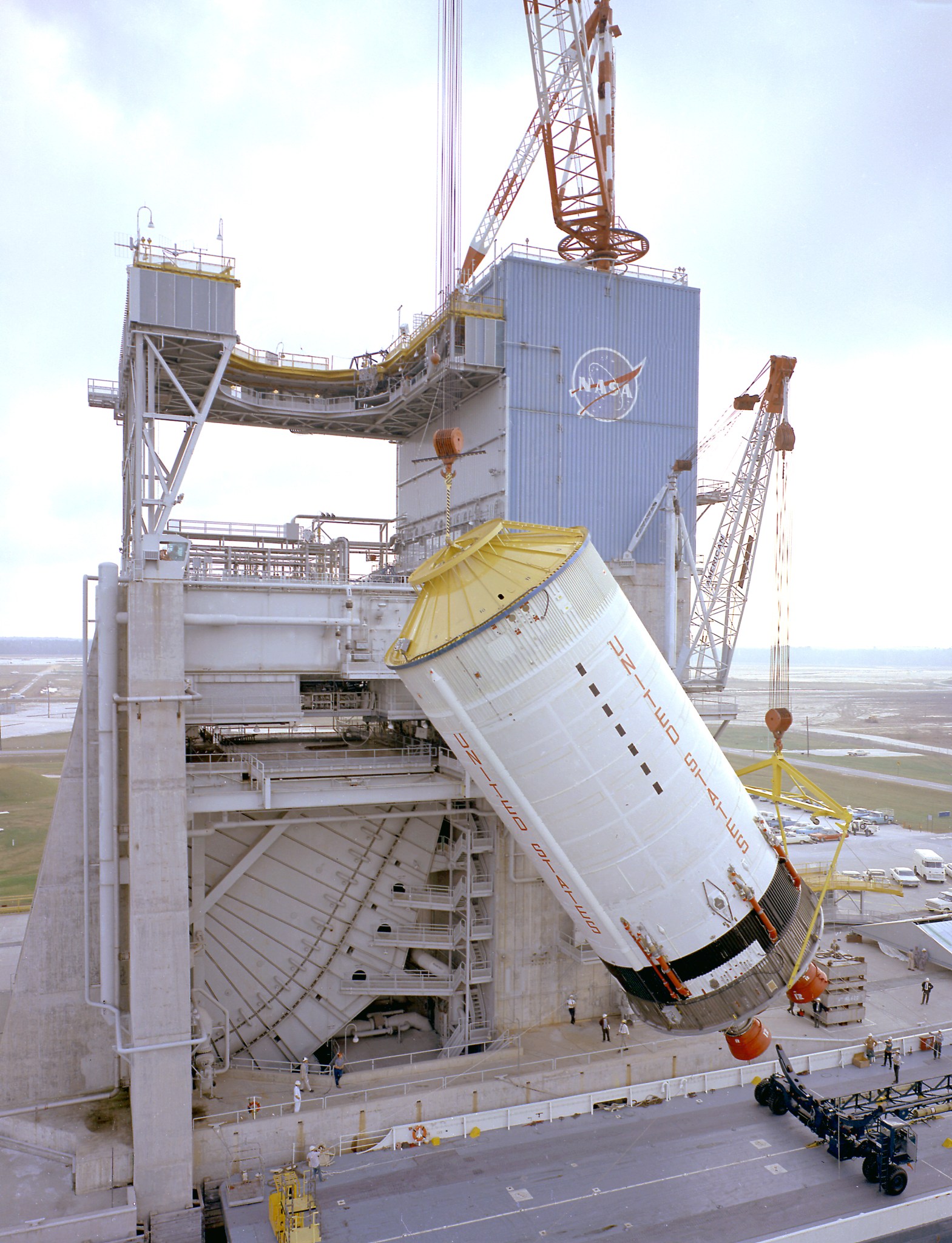
This week in 1968, the Mississippi Test Facility — today’s NASA Stennis Space Center — successfully completed the first full-duration static test firing of 1968. Engineers and technicians static-fired the fourth flight version of the Saturn V second stage, S-II-4, for six minutes. The S-II-4 was used on the Apollo 9 Saturn V launch vehicle. Developed by the Space Division of North American Aviation under the direction of NASA’s Marshall Space Flight Center, the S-II stage employed five J-2 engines, each capable of producing 225,000 pounds of thrust. Here, an S-II stage is hoisted into the A2 test stand. Now through December 2022, NASA will mark the 50th anniversary of the Apollo Program that landed a dozen astronauts on the Moon between July 1969 and December 1972, and the first U.S. crewed mission — Apollo 8 — that circumnavigated the Moon in December 1968. The NASA History Program is responsible for generating, disseminating and preserving NASA’s remarkable history and providing a comprehensive understanding of the institutional, cultural, social, political, economic, technological and scientific aspects of NASA’s activities in aeronautics and space. For more pictures like this one and to connect to NASA’s history, visit the Marshall History Program’s webpage. (NASA)
Obituaries
Melvin A. Bryant III, 82, of Decatur, Alabama, died Dec. 19. He retired from the Marshall Center in 2004 as a manager in the Launch Vehicles Projects Office. He is survived by his wife, Carol G. Bryant.
Frederick V. McDaniel, 90, of Huntsville, died Feb. 5. He retired from the Marshall Center in 1989 as a manager in technical engineering operations. He is survived by his wife, Helen S. McDaniel.


























